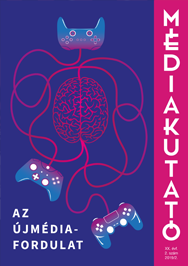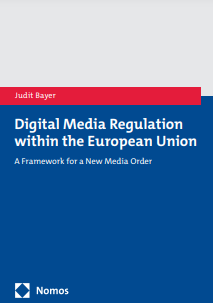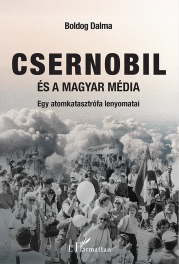Contents – Summer 2019
Pusztai, Virág:
Pusztai, Virág:
The picto-philosophical reflections of the expression opportunities inherent in pictures in the mirror of new media phenomena
The introduction of social media applications specified in the sharing of photo and video contents has given rise to the question of whether pictures can take over the place of written texts. If we approach this issue from the visual media phenomena of these days, and calculate with the changes that occurred in the features of technical picture, we might come to the conclusion that this dilemma—as the pondering of the possible outcome of a process—has lost its reason for existence to a certain extent, because these days it is not the traditional technical picture that struggles to extrude the written word, but the hybrid picture and multimedia that operate with both acoustic and visual ingredients. Then again, a pictures versus words debate is topical, as it helps to highlight the relation between the about-to-be-born visual language and the verbal one. This paper seeks to provide improvers to this debate by examining the visual new media phenomena in the mirror of picto-philosophical reflections conceived in the scope of visual wimple.
Médiakutató Summer 2019 pp. 9-18
Pólya, Tamás:
Pólya, Tamás:
A cultivation analysis of video games. An overview of some key points and international research findings
Cultivation theory is one of the most important theories in media effects research. It focuses on how television, conceptualised as a ‘storyteller’, may cultivate a system of values in the viewer. In the last few decades, however, many other forms of storytelling media such as videogames have emerged in the digital domain. The paper recapitulates recent developments in cultivation theory and its critique. It tries to locate videogames within the mass media ecosystem by considering some international and Hungarian consumption data and by describing the characteristics of these games in comparison to television as a medium. Then it reviews various international studies that applied cultivation analysis to digital games successfully, showing that such games, as an audio-visual medium, can express and reinforce a system of values represented in them (e.g. the story, the visuals, the connections between the represented elements) just as television programmes do. It emphasises that videogames merit our attention as an interactive medium, too.
Médiakutató Summer 2019 pp. 21-45
Buvár, Ágnes:
Buvár, Ágnes:
How typical ad representation affects the recognition and evaluation of sponsored contents
This paper focuses on how sponsored content is identified and categorised as an advertisement (ad recognition). The study is built on the theoretical assumptions of the Persuasion Knowledge Model, seminal categorization, and schema theories. It asks the question of how previous advertising-related knowledge (here: typical ad representation) affects ad recognition and the evaluation of sponsored content examples. 253 persons (Mage = 25,9, SDage = 6,34, 60,7 % female) participated in this mixed-method exploratory study which presented a control item and eleven examples of different sponsored content formats. Participants were categorised in five groups based on their typical ad representation. The findings evince differences in the ad recognition of the groups and in the case of five stimuli, the typical ad representation moderated the effect of ad recognition on ad liking. This study also discusses the practical implications of its findings for both advertising professionals and regulators.
How typical ad representation affects the recognition and evaluation of sponsored contents
Médiakutató Spring 2019 pp. 47-59
Polyák, Gábor – Szávai, Petra – Urbán, Ágnes:
Polyák, Gábor – Szávai, Petra – Urbán, Ágnes:
News consumption patterns in Hungary
The launching of the umbrella organisation Central European Press and Media Foundation co-ordinating the news services of private pro-government outlets in October 2018 re-triggered the old debate on the relative weight of pro-government and of critical media outlets. In cooperation with Median Opinion and Market Research Company, Mérték Media Monitor conducted a representative survey on the news consumption patterns of Hungarians in 2018. The survey, repeated for a fifth time, aims explicitly at identifying the various sources of the news consumed. It finds, among other things, that news consumers tend to lock themselves in the ‘news bubbles’ of their chosen political camps.
News consumption patterns in Hungary
Médiakutató Summer 2019 pp. 63-80
Polyák, Gábor – Torbó, Annamária:
Polyák, Gábor – Torbó, Annamária:
The situation of journalism education in Hungary: Outcomes and lessons of a comparative research
Digitalisation has significantly changed the dynamics of journalism and the everyday job of journalists. In parallel with journalism practice, journalism education should keep up with these technological and economic changes. In the framework of an Erasmus+ strategic partnership project called NEWSREEL (New Skills for the Next Generation of Journalists), a comparative research has analysed how the new skills needed for today’s journalists appear in the curricula of academic journalism education in Hungary, Romania, Germany and Portugal. The main focus was on data journalism, collaborative journalism, new business models and ethical challenges for journalists in the digital age. The research highlights that the different institutions under observation have adopted their curricula to the new needs of the media industry with various forms and degrees. In this study, we primarily focus on the Hungarian outcomes.
The situation of journalism education in Hungary: Outcomes and lessons of a comparative research
Médiakutató Summer 2019 pp. 81-87
Kiss, Eszter:
Kiss, Eszter:
Populism and the management of terrorism
This case study seeks to provide an insight into changes in communications about terrorism, while also searching for populist patterns in the speeches of political leaders. It analyses the official speeches of the country leaders of the USA, France, Hungary and Germany after the terrorist attacks of 11 September 2001 and 13 November 2015 in Paris. The research design is based on the principle that terrorism should always be interpreted through the lens of the social and political context of the attack. Therefore it attempts to explore how the new symbolic reality dominated by populism changed these political speeches over just fifteen years. Politicians addressed patriotism and power demonstration at both occasions. However, while in 2001 shock was the predominant emotion in the commentaries, in 2015 all country leaders followed their own political narratives to interpret the attacks and thereby to control and manage public reactions. These planned, management-like, attitudes mirror the political environment and the social challenges of the countries. Consequently, Viktor Orbán’s speech in 2015 carried numerous populist traits.
Populism and the management of terrorism
Médiakutató Summer 2019 pp. 91-104




